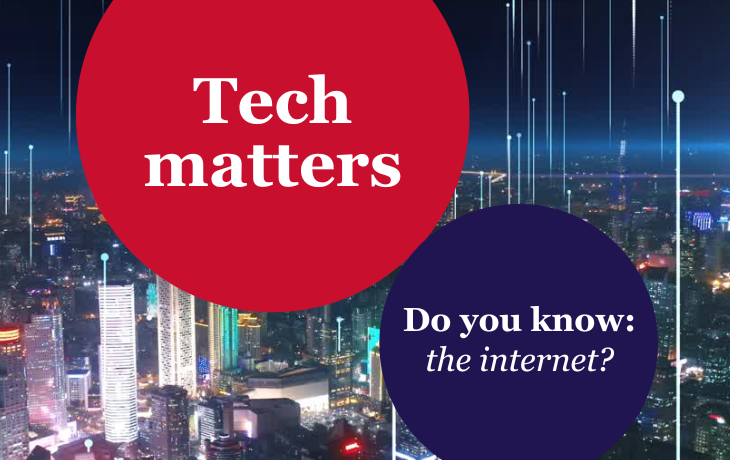The internet is governed by no one and everyone
Who owns, runs and governs the internet? From its origins in the 1960s as a US government project, to its current global scale, the internet’s evolution has been shaped by a shared responsibility among governments, private-sector entities, civil society and researchers.
There is no central developer, owner or operator of the internet. Instead, governance involves different stakeholders playing distinct roles based on the forum, nature and location of the issue. Internet governance broadly focuses on two issues – the development and functioning of the internet, and the regulation of activities that occur online.
The internet’s origins
The internet was initiated by the US Defense Advanced Research Projects Agency in the 1960s. One reason for its creation was to enable users to share access to large and expensive computers over the network – a function that remains relevant today due to access to high-performance computers and future quantum computers. Another reason was to facilitate inter-networking between different types of networks, which continues to be relevant as interconnection between the increasing number of networks is a key characteristic of the internet today. From its defence roots, the US developed and operated the academic NSFNet, eventually leaving the internet to commercial forces 30 years ago, on 30 April 1995.
The beginnings of internet governance
Although the US initiated the internet, it left the development of the initial standards to academics and researchers. In 1986, the Internet Engineering Task Force (IETF) standards body was established, independent of any government. It is tasked with developing open standards for the core functions of the internet. Anyone with a good idea and willingness to contribute is welcome to participate in the development of these standards.
The names and numbers used to find websites and send emails require central oversight to ensure unique assignments. The US government created the Internet Corporation for Assigned Names and Numbers (ICANN) in 1998. This non-profit organisation administers the domain name system (including domains such as .com and .org) and the underlying IP addresses used to route traffic. While the US government maintained a role initially, by 2016 it had fully relinquished control over these critical functions.
Multi-stakeholder governance of the internet
Both the IETF and ICANN are open to broad participation by interested parties and exemplify the multi-stakeholder model of governance that characterises the internet. This model was endorsed at the first UN meeting addressing the internet, the World Summit on the Information Society (WSIS), which convened first in Geneva in 2003 and then in Tunis in 2005. One action taken was to address open questions on internet governance. Twenty years ago, in June 2005, the Working Group on Internet Governance provided a working definition of multi-stakeholder governance which remains relevant today:
“Internet governance is the development and application by Governments, the private sector, and civil society, in their respective roles, of shared principles, norms, rules, decision-making procedures, and programs that shape the evolution and use of the Internet.” – Working Group on Internet Governance report, June 2005
In this model, each stakeholder has a role to play. The private sector is the owner and operator of most internet infrastructure, the vendor of equipment and devices, and the developer of software and applications. Civil society represents users by advocating for internet access and defending digital rights, among other roles. Academics and researchers continue to help develop internet standards, and individuals can participate in various ways, including at the annual UN Internet Governance Forum.
Governments’ growing role
The term ‘governance’ shares a root with ‘government’, and the latter’s role has increased as internet usage has expanded. One key role of governments is to determine how offline laws apply online and address any policy gaps. Governments initially took a passive role given the limited early use of the internet, which promoted innovation. They adopted a more reactive stance as negative offline behaviours, including cyber crimes, misinformation and hate speech migrated online. As AI technology emerges and attention is focused on potential implications, governments are taking a proactive approach to mitigate high-risk activities.
The original developers of the internet launched a network with simple goals, the ultimate scope and scale of which they could hardly have imagined. The multi-stakeholder model of internet governance has built upon the initial development, maintaining and expanding the technical success factors that enable the internet to serve billions of users, millions of businesses, and numerous organisations and governments, influencing every aspect of our economic and social lives today.

Do you know the internet?
Author

Michael Kende
Senior AdviserRelated items
Report
Study on the Internet's technical success factors
Article
AI regulation is set to diverge over the short term, before converging in future
Report
Unleashing the power of all domains: the social, cultural, and economic benefits of Universal Acceptance
